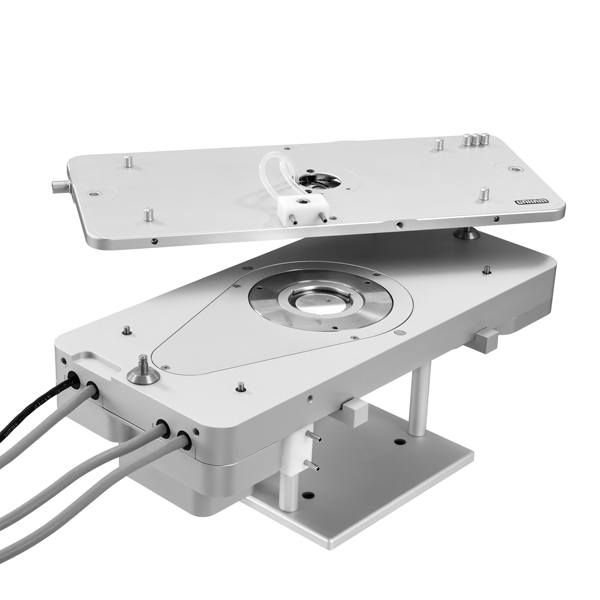Linkam CSS450 Optical Rheology System
SKU:L-CSS450
The Linkam Optical Shearing System (CSS450) allows structural dynamics of complex fluids to be directly observed via a standard optical microscope while they are under precisely controlled temperature and various shear modes.
Using the optical shearing cell, it is possible to study the microstructure evolution of complex fluids in great details for many physical processes, e.g. coarsening of binary fluids during their phase separations, flow-induced mixing and demixing of polymer blends, defects dynamics of liquid crystals, aggregation of red blood cells and their deformation in flows etc. We are then in a good position to correlate micro structural dynamics with rheological data for gaining insight into rheology of complex fluids.
The Linkam Optical Shearing System (CSS450) allows structural dynamics of complex fluids to be directly observed via a standard optical microscope while they are under precisely controlled temperature and various shear modes.
Using the optical shearing cell, it is possible to study the microstructure evolution of complex fluids in great detail for many physical processes, such as coarsening of binary fluids during their phase separations, flow-induced mixing and demixing of polymer blends, defects dynamics of liquid crystals, and aggregation of red blood cells and their deformation in flows. The user is then in a good position to correlate micro structural dynamics with rheological data for gaining insight into rheology of complex fluids. The images captured by microscope can also be used to validate numerical results from our computer simulations as well as other experimental data from indirect measurements such as by scattering technique.
The CSS450 uses two highly polished quartz plates that are parallel to within 2um. Each plate is in thermal contact with an independently controlled pure silver heater utilizing platinum resistors sensitive to 0.1°C.
The bottom plate, on which the sample is placed, operates in either oscillatory, steady or step shear modes programmed within a motor control spread sheet.
To facilitate various textures or particle sizes in different samples, the gap between the two plates can be precisely set from 5 to 2500um, the speed of this change in gap setting can also be varied.
Recently the CSS450 has been used with X-ray techniques and also with a liquid nitrogen cooling option (Cryo CSS450) further extending the temperature range to -50°C which has enabled work on the effects of shear on ice crystals.
Features
Stage body size: 273mm x 148mm x 89mm
Stage gap settings between 5 and 2500 µm
Modes of operation: steady velocity-step movement-and oscillatory
Removable lid for easy sample loading & cleaning
Temperature Range: -50 to 450°C (with cryo option)
Temperature Stability: ±0.2°C
Light Aperture Opening: 2.5 mm
Minimum Objective Working Distance: 7.4mm
Minimum Condenser Working Distance: 10mm
Maximum Heating/Cooling Rate: 30°C/min
Speak to a Scientist
McCrone Group's analytical scientists are available to answer your questions. Have a project you'd like to discuss? Give us a call or email us!
